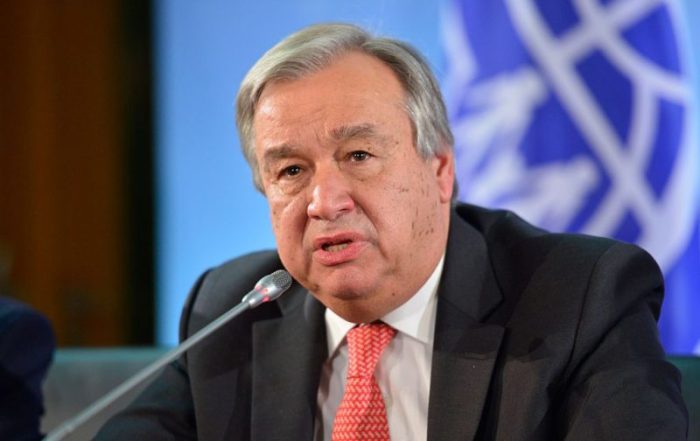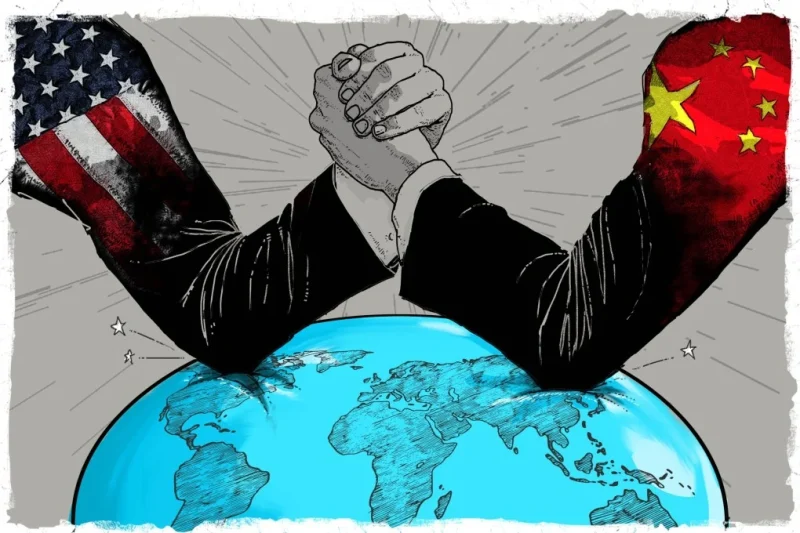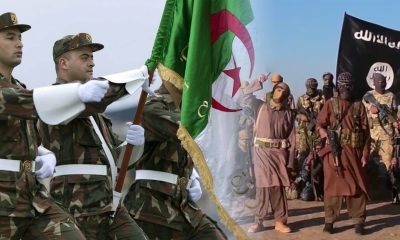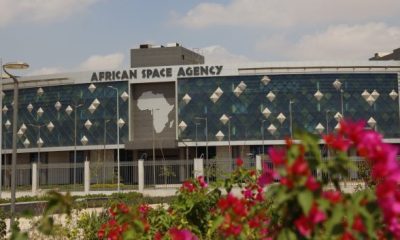Analysis
Mali-Algeria Tensions Escalate Amid Sahel Instability

The accusation by Mali’s ruling military junta against Algeria for allegedly supporting Tuareg rebel groups has added a volatile layer to an already precarious situation in the Sahel region. This development underscores the complex dynamics of a region grappling with jihadism, fractured alliances, and deepening distrust among key players.
The Roots of Mali-Algeria Tensions
The accusations reflect long-standing tensions over the Tuareg issue. The Tuareg people, indigenous to the Sahara, have been at the heart of regional unrest for decades. Their repeated rebellions, particularly the 2012 insurgency, have sought autonomy or independence for Azawad, a region spanning northern Mali. While Algeria has historically positioned itself as a mediator in Mali’s internal conflicts, Bamako’s current claims suggest a shift in perceptions, with Algeria now being viewed as a destabilizing actor rather than a neutral arbiter.
Algeria’s alleged support for Tuareg factions may stem from its strategic interests. By maintaining influence over these groups, Algeria could be seeking to manage the spillover effects of instability in Mali and Niger, ensuring its own border security while preserving leverage in regional politics. However, this approach risks alienating Mali’s junta, which views any external engagement with armed groups in its territory as a threat to national sovereignty.
Mali’s Geopolitical Shift and Ecowas Departure
Mali’s recent decision, along with Burkina Faso and Niger, to withdraw from the West African bloc Ecowas further complicates regional coordination. This withdrawal diminishes an already fragile collective effort to combat jihadism and address governance challenges. Mali’s accusations against Algeria may reflect a broader strategy to redefine its alliances, distancing itself from traditional partners and pivoting toward new or non-aligned actors, such as Russia.
The departure from Ecowas also signals Mali’s growing estrangement from regional frameworks that have historically managed crises. This fragmentation weakens the Sahel’s collective security architecture, providing opportunities for jihadist groups to exploit gaps in coordination.
The Tuareg Factor and Regional Implications
The Tuareg rebels, central to this controversy, have long been a wildcard in Sahel politics. Their pursuit of autonomy in Azawad has historically placed them at odds with Malian authorities, but their influence extends across borders, involving Algeria, Niger, and even Libya. Algeria’s alleged support for these groups could be interpreted as an attempt to counterbalance Mali’s growing militarization under its junta and to ensure stability within its own southern regions.
For Mali, the Tuareg issue is inseparable from the broader jihadist threat. The overlap between insurgent groups and jihadist factions creates a highly combustible environment. Accusing Algeria of harboring and aiding these rebels may be a strategic attempt to delegitimize any peace processes that bypass Bamako’s control, while simultaneously rallying nationalistic sentiment domestically.
The deterioration of relations between Mali and Algeria is occurring against a backdrop of increasing regional instability. The Sahel is already a hotspot for jihadist violence, fueled by weak governance, porous borders, and competing foreign interests. As Mali shifts away from cooperation with Western-backed initiatives and leans on non-traditional allies like Russia, its relationship with neighboring Algeria becomes even more strained.
Algeria, for its part, may feel compelled to exert influence over Mali’s Tuareg factions as a counterbalance to the growing presence of external actors like Wagner Group mercenaries in the region. This strategic competition risks escalating tensions and undermining efforts to address the root causes of instability in the Sahel.
A Fragmented Future
The accusations leveled by Mali’s junta against Algeria are symptomatic of a broader trend of fragmentation in the Sahel. As regional actors pursue divergent strategies and prioritize their own security interests, the collective fight against jihadism becomes increasingly untenable. Algeria’s alleged support for Tuareg rebels, whether substantiated or not, adds a layer of mistrust that complicates diplomatic efforts.
Moving forward, the Sahel’s stability will depend on rebuilding trust among regional actors, fostering inclusive dialogue with marginalized groups like the Tuareg, and addressing the socio-economic drivers of conflict. Without a unified approach, the region risks sliding further into chaos, with implications not just for Mali and Algeria but for the entire international community invested in countering terrorism and fostering stability in the Sahel.
Analysis
America Pulls the Plug on Somalia: UN Funding Blocked, AUSSOM on the Brink

Trump eyes embassy closures as US rejects UN plan to fund peacekeepers in Somalia — Mogadishu’s last lifeline in peril.

The US shocks the UN by rejecting funding for African Union forces in Somalia, just as Trump weighs closing the US Embassy in Mogadishu. With Al-Shabaab advancing and oil politics heating up, is Somalia doomed to implode?
The United States just signaled the collapse of Somalia’s last fragile security architecture — and it did so with chilling clarity. Washington has publicly rejected UN efforts to fund the African Union Stabilization Support Mission in Somalia (AUSSOM), effectively gutting any hope for predictable peacekeeping operations in a country teetering on the edge of collapse.

This isn’t just a bureaucratic snub — it’s a geopolitical death sentence for Somalia. Al-Shabaab militants are already testing the vacuum, launching a multi-pronged assault on Adan Yabaal, a key military base in Middle Shabelle. If confirmed, the town’s fall would mark the largest strategic loss since Somalia launched its offensive against terror in 2022.
UN Secretary-General António Guterres warned the Security Council: no funding, no peace. But the US—under Trump’s second-term posture—is slamming the door shut, labeling Somalia as unfit for a hybrid funding model under Resolution 2719. Diplomats are in a panic. Meanwhile, Trump is reportedly planning to close up to 30 diplomatic missions, with Mogadishu’s embassy topping the list.
Somalia’s response? Desperation disguised as diplomacy. The FGS is now peddling oil blocks in contested territories like Nugaal Valley. In a flashy announcement on X, Somalia’s ambassador to the US declared “Somalia is open for drilling,” targeting American firms with an offer it legally and militarily cannot secure.

Somalia’s Ambassador to the United States, Dahir Hassan Arab
The move comes after Somalia’s recognition of SSC-Khaatumo — a region still engulfed in the political wreckage of its war with Somaliland.
This isn’t about development. It’s about weaponizing recognition, resource manipulation, and fake sovereignty in a bid to win Trump’s favor and undermine Somaliland’s momentum.
But while Hargeisa builds forests and attracts foreign media praise, Mogadishu is drowning in debt, insurgency, and denial. The West is tuning out, and even the UN is losing patience. The US, once Somalia’s diplomatic oxygen, is now pulling the plug.
Somalia is not rising — it’s being unplugged.
Analysis
Somalia’s Egypt-Eritrea alliance is no anti-terror pact — it’s a Nile-fueled power play against Ethiopia

Proxy Firestorm in the Horn.

New Georgetown report warns: the Horn of Africa is on the brink of a regional war.
Somalia’s Gamble in the Horn.
As Ethiopia flirts with Somaliland recognition, Somalia deepens ties with Egypt and Eritrea—fueling a proxy showdown in the Horn of Africa. A new Georgetown report warns of a geopolitical powder keg.
TACTICS OR TROJAN HORSES? SOMALIA’S NEW ALLIANCES COULD IGNITE THE HORN
Somalia isn’t just shifting alliances — it’s detonating new frontlines. A new report from the Georgetown Journal of International Affairs tears the veil off Mogadishu’s widening web of military deals and exposes a regional arms race that’s dragging Egypt, Ethiopia, Turkey, and Eritrea into what could become Africa’s next great conflict.
The flashpoint? Somaliland. The January 2024 port access deal between Somaliland and Ethiopia, in which Ethiopia would gain maritime rights in exchange for recognition, has shattered old assumptions. Furious, Somalia raced into the arms of Egypt and Eritrea — two states that already view Ethiopia as a regional nemesis. Egypt’s military cargo to Somalia in early 2025 wasn’t about fighting Al-Shabab — it was about squeezing Ethiopia over the Nile.
The report warns: peacekeeping missions like AUSSOM are no longer neutral. They’re being manipulated by rival states to project hard power under soft banners. With Ethiopia’s troops still embedded in Somalia’s stabilization efforts, the stage is set for internal sabotage masquerading as peace.
Mogadishu’s sudden outreach to Azerbaijan and Turkey further muddies the waters. The UAE, Russia, and China are already entrenched through ports and military outposts, turning Somalia into the ultimate battlefield for global influence.
Forget diplomacy — this is geopolitical brinkmanship at its rawest. The Horn of Africa is becoming a chessboard of oil, access, and arms, and Somalia just moved its queen into check.
WARYATV.COM | FRONTLINE ANALYSIS
Analysis
How Iran, China, and Russia Are Building a Shadow Empire to Cripple the West

The 2025 U.S. threat report reveals a chilling escalation—America’s enemies are no longer acting alone. Welcome to a world where Iran trains proxy killers, China hacks satellites, and Russia prepares nukes in orbit.
WARYATV Exclusive Analysis
What happens when four of America’s most dangerous enemies start coordinating? According to the U.S. Intelligence Community’s 2025 Threat Assessment, we’re already in that nightmare—and the world’s balance of power is tilting fast. Iran, Russia, China, and North Korea are no longer just isolated threats; they’re actively aligning to undermine the West on every front—military, cyber, economic, and even orbital warfare.
Iran is arming to the teeth and rallying its regional proxies—the Houthis, Hezbollah, and al-Shabaab—with precision-guided drones and ballistic missiles aimed squarely at Israel and U.S. forces. Despite its internal crises, Tehran is playing the long game. It’s forging deeper alliances with Russia and China, supplying drones to Moscow and quietly embedding networks inside the U.S. itself, targeting former and current officials.
Meanwhile, Russia has fully shifted to wartime footing. Despite 750,000 casualties in Ukraine, Putin is more defiant than ever. Moscow is stockpiling weapons, deploying nuclear subs near American shores, and now developing a space-based nuclear satellite—a potential Pearl Harbor in orbit. The Kremlin is also flooding the globe with anti-American propaganda using AI-generated influencers and fake news bots.
Then there’s China—the ringleader of digital authoritarianism. It’s no longer just about Taiwan. Beijing is stockpiling critical minerals, buying ports from Greenland to the Horn of Africa, and arming its AI-driven army with satellite killers. China’s Volt Typhoon and Salt Typhoon cyber ops have already penetrated U.S. infrastructure. Next up? LLM-powered disinformation to flood American minds with doubt and division before the 2026 elections.
North Korea? It’s no longer the clownish rogue state. It’s sending troops to help Russia in Ukraine and funneling war profits into its expanding nuclear arsenal. The DPRK now flies hypersonic missiles capable of evading U.S. defenses. Kim Jong Un is no longer begging for attention—he’s trading nukes for influence.
The scary part? These four regimes are increasingly acting as one strategic axis. The U.S. report makes it clear: if war breaks out with one, the others may follow.
Welcome to the new world disorder.

Analysis
South Korea: Ties Established with Syria Amid Shift in Middle East Alliances

Seoul forms ties with Damascus—once North Korea’s close ally—signaling deeper fractures in Kim Jong Un’s global circle.
From Cold War enemy lines to unexpected diplomacy, South Korea has pulled off a quiet but powerful geopolitical win: establishing full diplomatic ties with Syria, a state long entrenched in North Korea’s orbit.
This isn’t just a photo-op. It’s the final piece of Seoul’s 191-state UN diplomatic puzzle—and a direct message to Pyongyang. The deal, signed in Damascus by South Korean Foreign Minister Cho Tae-yul and his Syrian counterpart Asaad al-Shibani, opens the gates for economic collaboration, reconstruction assistance, and developmental aid to a battered but rebuilding Syria.
But the deeper story? Syria’s new transitional government is recalibrating. Under President Ahmed al-Sharaa, Damascus is charting a path away from militant reliance and Iranian dependence. Former HTS affiliates and technocrats now sit together in a reform-minded cabinet that’s prioritizing civil unity, dismantling militias, and inviting investment—from Seoul, not Tehran.
Meanwhile, North Korea is silent. Since Assad’s fall, Kim Jong Un’s state media has hardly mentioned Syria—except for one vague nod to “the Middle East crisis.” And while North Korea once flooded Syria with arms and advisers, it now watches as South Korea lands in the heart of its former ally’s reconstruction blueprint.
Strategically, this could be a diplomatic domino: Syria joined Turkey’s Anatolia Forum, hinting at a new regional outreach effort, even as the country remains divided—with Turkish forces, US-backed SDF, and former militias still active.
Seoul’s next move? Offering its post-war economic miracle model as a blueprint for Syria’s rebirth—and inserting itself into Middle Eastern politics like never before.
Pyongyang has lost a foothold. Washington is watching. Beijing is calculating. And Syria? It may have just opened its gates to a brand new alliance map.
Analysis
Trump’s Iran Deal: Will Israel Pay the Price for Loyalty?

As nuclear talks resume, Israeli defense officials fear Trump’s quest for a symbolic win could come at the cost of national security.

Trump’s unpredictable stance on Iran’s nuclear program is raising alarm in Israel, where top defense figures fear a deal may tie their hands and risk national security.
Israel’s generals are biting their tongues — but not their worries. Behind closed doors in Tel Aviv and within the Mossad’s fortified halls, a rising fear is taking hold: that Donald Trump, the self-declared “best president Israel’s ever had,” might cut a flashy but hollow deal with Iran that leaves the Jewish state more exposed than ever before.
There’s no question Trump has been a close friend to Israel — moving the embassy to Jerusalem, recognizing the Golan Heights, and greenlighting regional realignments. But even friendships have limits, and this one is now being tested on the most existential front of all: Iran’s nuclear program.
Trump’s history of dramatic diplomacy — from North Korea’s empty stage shows to flirtations with Putin — has Israeli strategists fearing the return of the JCPOA nightmare under a different name. Despite Defense Secretary Pete Hegseth’s saber-rattling and a beefed-up US military presence near Iran, the concern is that Trump will trade meaningful nuclear rollbacks for symbolic gains to score a quick political win. Close a facility? Iran can build another. Destroy some old centrifuges? Tehran has next-gen tech ready to roll.
And while Trump may boast of cutting a deal “better than Obama’s,” Israeli intelligence knows the truth can be buried beneath tons of uranium — or moved silently underground.
Netanyahu’s dance with Trump hasn’t reassured anyone either. The Israeli PM left his own security cabinet in the dark after meeting with Trump, raising eyebrows by sidelining dissenting voices. Worse, there’s been no hint from Washington of a hardline “Libya model” disarmament — just whispers of concessions.
The result? A growing chorus within the IDF and Mossad saying, if Trump seals this deal, Israel may lose its last, best window to strike Iran’s program before it’s buried too deep to touch.

Trump may be Israel’s most bombastic friend. But in the realm of nuclear diplomacy, Israel needs precision, not pageantry. A weak deal now could leave Jerusalem isolated, handcuffed, and with no choice but to act alone — or too late.
Analysis
Merz’s Coalition: Germany’s Answer to Trump’s Trade Blitz and Putin’s War Machine

Under pressure from Trump’s tariffs and Putin’s aggression, Germany’s new chancellor builds a rapid-fire coalition to reassert European leadership and restore stability.
Friedrich Merz seals a high-stakes coalition to counter Trump’s economic shockwaves and Putin’s war threats. Germany is back—with debt-fueled defense, tougher borders, and a warning to Washington.
Germany blinked, then moved fast. With Donald Trump hurling 20% tariffs at the EU and Vladimir Putin digging deeper into Ukraine, Friedrich Merz did what German leaders rarely do—he moved with speed. Just 45 days after his snap election win, Merz sealed a powerful coalition deal with the center-left SPD, not out of political convenience, but out of strategic necessity.
This isn’t just domestic politics—it’s about survival. Trump’s trade war is blowing a hole through Germany’s industrial heartland. Putin, undeterred and emboldened, watches Europe flounder. And the United States, once a security guarantor, now looks more like a wildcard. For Berlin, the old transatlantic order is dead—and Merz knows it.
His coalition, fast-tracked under extraordinary pressure, promises billions in military and infrastructure spending, not out of generosity but to plug the vacuum left by America’s retreat. But Merz’s problem is internal too: while EU leaders cheer the deal, back home his own base sees betrayal—fueled by AfD populists calling him weak on borders and sold out to the left.
That’s why Merz pivoted hard on migration: slamming shut asylum routes, promising deportation surges, and pushing “safe country” designations. It’s a political firewall against the far-right, but also a gamble that could fracture Germany’s social fabric.
Still, Merz had no choice. Trump’s tariffs and unpredictable diplomacy have shattered Europe’s illusions. The era of Germany hiding behind NATO is over. If Berlin wants influence, it has to pay—and fight—for it.
Merz’s message to Trump was simple: Germany is back. But the real message, loud and clear, was to Europe: the gloves are off, and Berlin is done waiting for America.
Analysis
China Strikes Back: Trump’s Trade War Just Triggered a New Cold Front

Beijing fires back at Trump’s 50% tariff with crushing 84% duties, bans on top U.S. defense firms, and a bold message to Washington: Enough is enough.
The trade gloves are off. China has just escalated its standoff with the United States into a full-blown economic cold war. Less than 48 hours after President Donald Trump unleashed a crushing 50% tariff on all Chinese imports, Beijing retaliated with ferocity: 84% total tariffs on U.S. goods and sweeping sanctions on 18 American defense contractors.
This isn’t tit-for-tat. It’s a calculated declaration that China is ready to match Trump’s aggression dollar for dollar — and missile for missile. The 18 companies, including military AI developer Shield AI and elite U.S. Air Force partner Sierra Nevada Corporation, are now blacklisted under Beijing’s “unreliable entities” framework. Translation? They’re locked out of China — no investments, no exports, no excuses.
The timing is as political as it is economic. These firms weren’t just targeted for trade; they were hit for arms deals with Taiwan, the democratic island Beijing vows to reclaim. The message from Xi Jinping’s government couldn’t be clearer: Play with fire in Taiwan, and your defense contractors burn.
So what’s the real fallout? While most of these companies don’t rely heavily on Chinese markets, Beijing knows how to exploit soft points in global supply chains. Just ask U.S. drone maker Skydio, which lost its Chinese battery source overnight after past sanctions. This move isn’t about business — it’s about leverage.
And still, amid this economic artillery exchange, China sends a chilling whisper to global investors: “Don’t worry — this won’t affect the honest ones.” But who defines honesty when geopolitical fault lines crack deeper every day?
Trump wanted a trade war. What he got was China’s economic kill switch flipped — not just in tariffs, but in strategic deterrence.
Because this isn’t just trade. It’s a battlefield — and the weapons are sanctions, supply chains, and national pride.
Analysis
Can Al-Sharaa’s Government Turn War-Torn Ruins into a Unified Nation?

Syria’s post-Assad leadership under Ahmed al-Sharaa outlines reconstruction, unity, and disarmament as priorities—but faces daunting internal and geopolitical obstacles.
After 15 years of civil war, Syria’s future hinges on one question: can the transitional government under President Ahmed al-Sharaa transform devastation into durable unity—or is this just the calm before another storm?
In their first official meeting on April 7, Sharaa’s government laid out an ambitious plan that reads like a blueprint for national resurrection. Reconstruction, integration of fractured regions, economic revitalization, and disarmament are the pillars. Yet behind every promise is a political landmine.
Sharaa himself—once the commander of the Islamist faction Hayat Tahrir al-Sham—now helms a government with surprising diversity: ministers representing Christians, Druze, Kurds, and even Alawites. This cosmetic inclusivity is designed to telegraph a message: this is not Assad’s Syria. But it may not be enough to convince a war-weary population still recovering from displacement, famine, and chemical attacks.
The biggest challenge? Territorial fragmentation. Turkey still controls chunks of northern Syria. The US-backed Syrian Democratic Forces (SDF) run the east. The recent deal between Sharaa and SDF commander Mazloum Abdi hints at a future merger—but it’s a fragile hope, not a certainty. And Iran, never far from Syria’s power grid, continues to loom in the background, quietly assessing how this transitional order threatens its regional interests.
Reconstruction sounds noble, but in practice it’s a logistical and financial nightmare. Entire cities must be rebuilt from scratch. Refugees are returning, only to find homes razed and services non-existent. The plan to reintegrate militias and dissolve non-state armed groups is bold—but could easily spiral into another power struggle.
Sharaa’s government also faces the delicate balancing act of civil peace and media control. Calls for “inclusive, national discourse” are loaded in a post-dictatorship context. Who decides what is inclusive? And can Syria build unity without honest reconciliation or transitional justice?
There is promise in Sharaa’s roadmap—but it’s crawling with risks. Without serious international backing and internal discipline, the new Syrian state could collapse under the same fault lines that doomed its predecessor.
The next 12 months will determine whether this new government is a bridge to peace—or just another fragile experiment in a country that’s seen too many false dawns.
-

 Analysis1 month ago
Analysis1 month agoSaudi Arabia’s Billion-Dollar Bid for Eritrea’s Assab Port
-

 ASSESSMENTS3 weeks ago
ASSESSMENTS3 weeks agoOperation Geel Exposes the Truth: International Community’s Reluctance to Embrace Somaliland as a Strategic Ally
-

 Somaliland3 months ago
Somaliland3 months agoSomaliland and UAE Elevate Ties to Comprehensive Strategic Partnership
-

 Africa1 year ago
Africa1 year agoHow Somaliland Could Lead the Global Camel Milk Industry
-

 Analysis1 year ago
Analysis1 year agoIran escalates conflict, attacking Israel; US forces help Israel to intercept Iranian projectiles
-

 Top stories11 months ago
Top stories11 months agoGunmen Kill 11 in Southeastern Nigeria Attack, Army Reports
-

 Analysis1 year ago
Analysis1 year agoIsrael and Iran on Edge: Tensions Escalate Amidst Rising Threats
-

 TECH11 months ago
TECH11 months agoZimbabwe Approves Licensing of Musk’s Starlink Internet Service




























